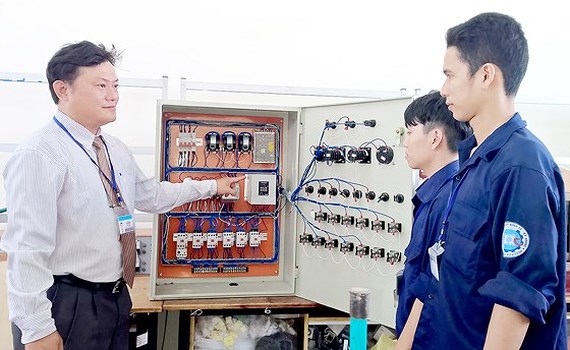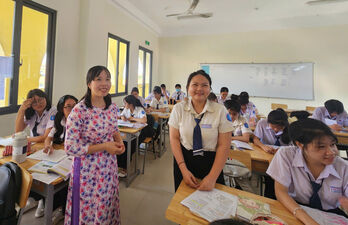
The project shows the government’s determination in human resource training for the Fourth Industrial Revolution, or Industry 4.0. However, the problem is that trained workers can transfer job and survive on their career.
The project’s aim is to make breakthrough in vocational training quality, contributing to career guidance in junior and senior high schools. Students in high schools will be consulted to take vocational training suitable for their choice to meet socioeconomic requirements and integration with Asian regions and with the world.
As per the project, all senior and junior school will have vocational guidance connected with local production and service by 2025. At least 80 percent schools in disadvantaged district have vocational guidance program by 2025.
Around 40 percent of graduates of junior high school will pursuit vocational training and at least 45 percent of senior high school students continue career training, according to the project.
The government will support equipment for vocational training facilities, which are selected to carry out the pilot program in the project.
Experts said consultation of vocational training is urgent matter as many university graduates get unemployed while the market lacks skilled laborers.
In reality, quality of Vietnamese laborers is low because of vocational and skill shortages.
Deputy Chairman of the Committee on Social Affairs of the National Assembly Bui Si Loi said that around 53.7 Vietnamese laborers are working in the national economy; however, 70 percent of them are working in the sections of non- union labor relations, accordingly, they are facing risks.
Worse, the rate of unemployment amongst young laborers is 7.5 percent. Therefore, Mr. Loi said it is time to improve laborers’ skills including for preparation of the Industry 4.0. Subsequently, vocational training development is on top priority including consultation in high schools.
Upon the number of over 200,000 unemployed university graduates, Minister of Labor, Invalids and Social Affairs Dao Ngoc Dung said that vocational training is expected to make breakthrough in offering stable job.
Consequently, the government has to focus on substantial revisions to the national education and training systems in consultation with numerous associated stakeholders.
Mr. Dung proposed that schools will provide vocational training according to enterprises’ and markets’ demand.
The government said that labor productivity for the whole economy in 2017 at current prices was estimated at 93.2 million dongs per worker, up 6 percent compared to 2016.
Though labor productivity increase gradually, by the 2011 purchasing power parity, Vietnam’s labor productivity in 2016 gained US$ 9894, equaling only 7.0 percent of Singapore’s, 17.6 percent of Malaysia’s, 36.5 percent of Thailand’s, 42.3 percent of Indonesia’s, 56.7 percent of Philippine’s, and 87.4 percent of Lao’s.
Noticeably, the difference in labor productivity between Vietnam and other countries still continued to increase./.
SGGP News
 Building a positive education environment
Building a positive education environment



